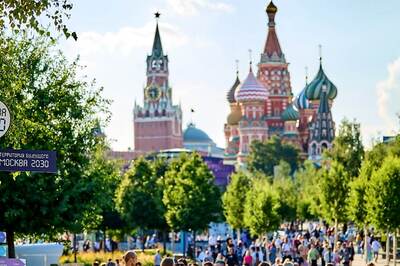
views
LOS ANGELES: California’s COVID-19 surge is showing signs of leveling off after besieging hospitals, emergency services and morgues for weeks, the state’s top health official said on Tuesday, although medical staffing continued to founder under the strain.
The number of newly hospitalized coronavirus patients statewide has declined to 2,500 admissions every 24 hours over the past two days, down from 3,500 before, California Health and Human Services Secretary Dr. Mark Ghaly said in an online briefing with reporters.
Ghaly called it “the biggest signal to me that things are beginning to flatten and potentially improve.”
He cited several other promising trends, including a slowdown in confirmed daily case numbers – 36,487 reported Tuesday, down from a weekly average of 42,000 cases a day – and a leveling off in the rate of diagnostic tests coming back positive. Moreover, a 5% uptick in COVID patients in hospitals over the past 14 days marked the lowest rate of increase in more than two months, Ghaly said.
The plateau, if sustained, will be welcome relief to healthcare professionals, ambulance teams and funeral workers overwhelmed by a California surge that began in November.
The stress has led to an exodus of hospital staff at Providence St. Mary Medical Center in Apple Valley, California, where coronavirus patients on stretchers lined the corridors on Tuesday and every available intensive care unit bed was filled.
‘IT’S JUST TOO MUCH’
Nurses, doctors, laboratory staff and technicians have been retiring, quitting or going on stress leave in record numbers, said Mendy Hickey, executive director of acute care services.
“It’s just too much for them anymore. It’s just really taking a toll on people,” Hickey said. “We’ve canceled surgeries, so we have O.R. staff nurses up here helping run codes. We have anesthesia technicians helping us do chest compressions in rooms.”
The strain is compounded by the intense nature of the swollen case load.
“It seems like they’re sicker than they’ve ever been before. We have more patients on ventilators than we’ve ever had at this hospital before in its history,” Hickey said.
Kari McGuire, supervisor of palliative care, said she had never seen so much death.
“We’re used to being able to hug families, we’re used to being able to have that one-on-one interaction with patients, and so much is now done over the phone,” McGuire said. “And with the increase of deaths, it’s made our job in palliative care much more difficult.”
SOBER MILESTONE
California, the nation’s most populous state, with some 40 million residents, has emerged as a leading U.S. epicenter of the pandemic despite health officials’ re-imposing some of the country’s most stringent restrictions on social gatherings and business activity.
COVID-related deaths, considered a “lagging indicator” in the trajectory of the pandemic, have continued to mount steadily in California, crossing the grim milestone of 30,000 to date as of Tuesday, Ghaly said.
The current post-Christmas and New Year’s wave of cases, while appearing to be less severe than anticipated, has yet to peak, because many of those infections will end up hitting hospitals, he warned.
He urged the public not to become complacent about mask-wearing, social distancing and other public-health safeguards until vaccines become widely available to the public.
“If you give COVID an inch it will take a mile. So we must keep our guard up,” he said.
The return to sweeping stay-at-home orders last month was instituted as spiraling infections drove ICUs to the limits of their capacity, especially in and around Los Angeles, home to about half the state’s population, and elsewhere in Southern California.
The state’s agricultural heartland in the San Joaquin Valley has also been particularly hard hit. Available ICU capacities in both regions have effectively hovered at zero for weeks.
The San Francisco Bay area is in better shape, but even there the situation remains dire enough that business for cemeteries and mortuaries has soared.
“It’s really taxing our systems,” said Robert Gordon, president of the Cypress Lawn Cemetery Association in Colma, near San Francisco, which has seen a four-fold increase in demand for services in January over a typical month last year.
“Today we had 10 embalmings, and eight of them were COVID. So it’s myself and then two other coworkers I have back there, and it’s just nonstop,” said Alexandra Petrini, preparation room manager for the embalming department at Cypress Lawn.
“We’re all just trying to do the best we can and navigate through this the best we know how,” she said.
(Reporting and writing by Steve Gorman in Los Angeles. Additional reporting by Nathan Frandino in Colma, Rollo Ross in Apple Valley and Daniel Trotta in Escondido, California; Editing by Gerry Doyle)
Disclaimer: This post has been auto-published from an agency feed without any modifications to the text and has not been reviewed by an editor
Read all the Latest News, Breaking News and Coronavirus News here



















Comments
0 comment